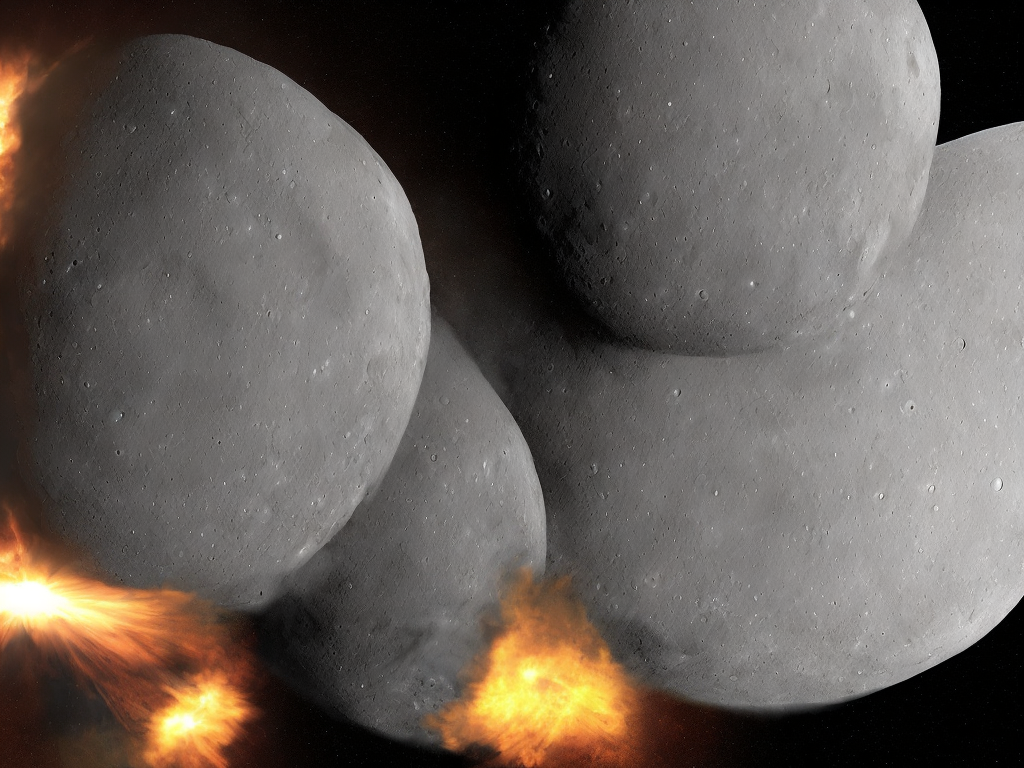
Chandrayaan 1 and Chandrayaan 2, the two notable lunar missions by the Indian Space Research Organization (ISRO), have played a crucial role in advancing India’s space exploration capabilities. While both missions shared the objective of studying the moon, they were vastly different in terms of their goals, payloads, and technological advancements. This article aims to delve into the differences between Chandrayaan 1 and Chandrayaan 2, highlighting their significance in India’s space exploration journey.
Chandrayaan 1, launched on October 22, 2008, was India’s first lunar mission and marked a major milestone in its space program. The primary objective of this mission was to map the lunar surface in order to enhance our understanding of the moon's topography, mineralogy, and the presence of water molecules. Chandrayaan 1 carried a range of scientific instruments including the Lunar Laser Ranging Instrument (LLRI), a high-resolution remote sensing camera called the Terrain Mapping Camera (TMC), and the Moon Impact Probe (MIP). These instruments allowed scientists to analyze the moon's surface, determine its mineral composition, and study the presence of water molecules.
One of Chandrayaan 1’s most significant achievements was the discovery of water molecules on the moon. The Moon Impact Probe, which crash-landed on the lunar surface in November 2008, detected the presence of water molecules in the form of hydroxyl and hydrated minerals. This discovery provided invaluable insights into the moon's geological history and opened up possibilities for future human missions.
Chandrayaan 1 also carried an instrument contributed by NASA, the Moon Mineralogy Mapper (M3). This instrument played a critical role in mapping the moon's surface and identifying several minerals, including pyroxenes and olivines, which are indicative of volcanic activity. M3’s findings revealed the previously unknown presence of water molecules in the moon's polar regions, confirming the existence of water ice. This discovery paved the way for future lunar missions aiming to explore and exploit these resources.
While Chandrayaan 1 focused on mapping the lunar surface and analyzing its mineral composition, Chandrayaan 2, launched on July 22, 2019, aimed to further expand India’s lunar exploration capabilities. This mission had a more complex objective of landing a rover on the moon's surface and conducting in-situ studies of lunar terrain. Chandrayaan 2 was comprised of an orbiter, a lander named Vikram, and a rover named Pragyan.
The lander and rover were designed to separate from the orbiter and facilitate a soft landing near the lunar south pole, a region of great scientific interest due to the presence of permanently shadowed regions that could potentially contain water ice. While the lander and rover were expected to operate for about 14 days, due to unforeseen circumstances, contact with the lander was lost during the descent phase, and the mission was only partially successful. However, the orbiter continues to function as planned and is still conducting valuable scientific experiments.
Chandrayaan 2 carried an array of advanced scientific payloads to investigate various aspects of the moon's surface and atmosphere. The orbiter, equipped with eight scientific instruments, including a high-resolution camera, a spectrometer, and a synthetic aperture radar, is instrumental in generating a 3D map of the lunar surface, studying the composition of the moon's atmosphere, and mapping the distribution of various elements.
Despite the technical setbacks faced during the mission, Chandrayaan 2 made significant contributions to lunar science. The orbiter's instruments discovered bright soil in craters near the poles, indicating a high concentration of unweathered lunar materials. Data from the orbiter's Dual Frequency Synthetic Aperture Radar allowed scientists to estimate the thickness of the moon's regolith, which is essential for future lunar exploration and sustaining human missions.
Furthermore, Chandrayaan 2 also aimed to examine the moon's exosphere, the thin layer of gas surrounding it. The orbiter investigated variations in the composition and density of the exosphere by analyzing neutral atoms, ions, and molecules present in the lunar environment. These findings provide valuable insights into the moon's surface and the processes occurring on its surface.
In conclusion, while both Chandrayaan 1 and Chandrayaan 2 had the overarching objective of exploring the moon, they differed significantly in terms of their goals, payloads, and technological advancements. Chandrayaan 1 focused on mapping the lunar surface, analyzing its mineral composition, and making groundbreaking discoveries regarding the presence of water molecules. On the other hand, Chandrayaan 2 aimed to further expand India's lunar exploration capabilities by attempting a soft landing, conducting in-situ studies, and investigating the moon's exosphere. Despite the partial success of Chandrayaan 2, both missions have played a crucial role in enhancing India’s space exploration capabilities, paving the way for future lunar missions, and contributing to humanity’s understanding of the moon and its resources.
 Self-Instruct
Self-Instruct